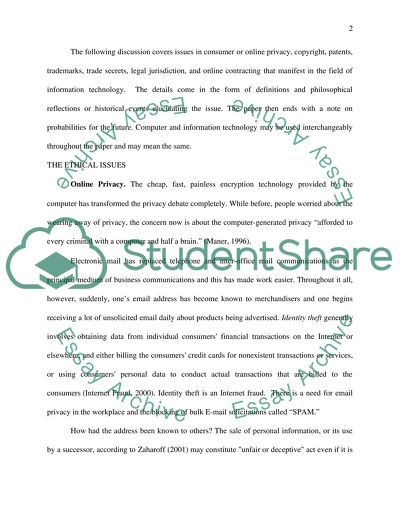Cite this document
(“Ethical Issues of Information Technology Essay Example | Topics and Well Written Essays - 2500 words”, n.d.)
Retrieved from https://studentshare.org/miscellaneous/1525074-ethical-issues-of-information-technology
Retrieved from https://studentshare.org/miscellaneous/1525074-ethical-issues-of-information-technology
(Ethical Issues of Information Technology Essay Example | Topics and Well Written Essays - 2500 Words)
https://studentshare.org/miscellaneous/1525074-ethical-issues-of-information-technology.
https://studentshare.org/miscellaneous/1525074-ethical-issues-of-information-technology.
“Ethical Issues of Information Technology Essay Example | Topics and Well Written Essays - 2500 Words”, n.d. https://studentshare.org/miscellaneous/1525074-ethical-issues-of-information-technology.


